Architects of Beauty: Nature's Webmasters
Arachne's fate: to hang by a silken thread and weave forever
These voiceovers are recorded ‘in the field’ with ambient sounds and occasional stumbles. My aim is to give you an evocation of place and a moment of tranquility.
Welcome to this week’s letter from the moss. This time I’m borrowing and building on a line from a previous letter:
Last night’s rain adding sparkle to plant and decorating the umbrellas of webs that appear so prominently as if to catch summer’s end.
As if to catch summer’s end. It’s a phrase that has stayed with me as the mists and melancholy of September built.
There are so many things that we think we know, but don’t. We quickly categorise, attach a label, then move on. The object of my close attention—a flower, a web, a leg bone—invariably has one or more companions. This year I’ve begun to learn their names. It is proving to be an education in how little we know of the small lives that exist in parallel with our own. Biodiversity isn’t just plants, birds and animals: ecosystems are built on and by some of the smallest creatures. The moss is no exception.
Architects of Beauty
In late summer, cool damp nights and still conditions reveal a master builder, an architect of beauty—and death. One image in particular inspired this reflection. At this time last September I wrote about connection, titling my letter The Stickiness of Place, and illustrating it with a seemingly perfect web on purple ling heather. Its form seemed a good metaphor for my activity here, circling the moss before being drawn in, getting stuck, and remaining in place.
The photo aligns with our preconceived idea of what a spider’s web should look like: labelled; left. It was only when photographing for The Rain’s Reward that I realised the extent to which other forms are available. Since then I’ve been looking more carefully. Image search and Halloween are dominated by concentric webs. Ask a child to draw a spider’s web and it will most likely look like this, the web of an orb-weaver. Bejewelled ornaments hanging between grasses, suspended from birch, dotted with dew, sometimes frost. Their movement in the breeze reminds me of washing hung out to dry.
But there are abstract and imperfect webs too. The chaotic and seemingly random lines of sheet webs fascinate me.
Writing this, Ariadne’s thread came to mind, and so I came to rediscover Arachne, the mythical weaver whose name we remember in arachnid. Her pride in her own skills and achievement, her failure to show deference to the gods, and her rash challenge to the goddess Minerva led to her being transformed into a spider, condemned to hang by a silken thread and spend eternity weaving.1
Other legends of spiders are, of course, available.2
Like last year, dewy webs have provided a net for me, and given an opportunity to rest my thoughts. Unlike the unfortunate fly, I will be able to leave, to continue my own thread of learning.
I don’t especially like getting up close to spiders,3 but you do have to admire their handiwork. There is, invariably, someone home if you come knocking. I realise I am fortunate not to have to worry unduly: these architects pose no risk to me. They vary from the sometimes tiny sheet weavers, a family that contains those supposedly lucky money spiders (not so good for the spider if you do put it in your pocket) to the larger orb weavers
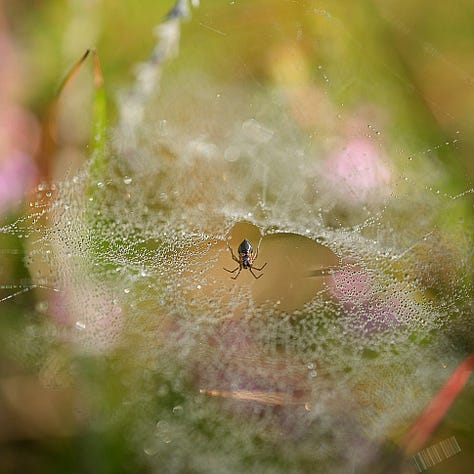
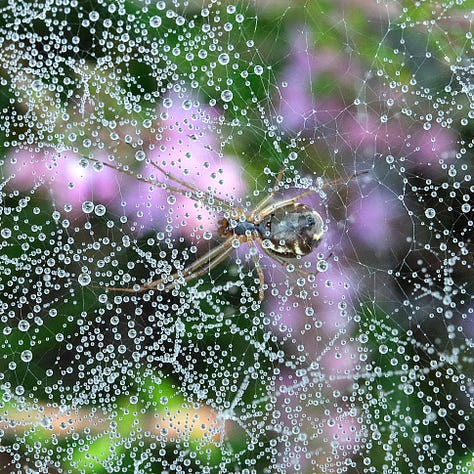
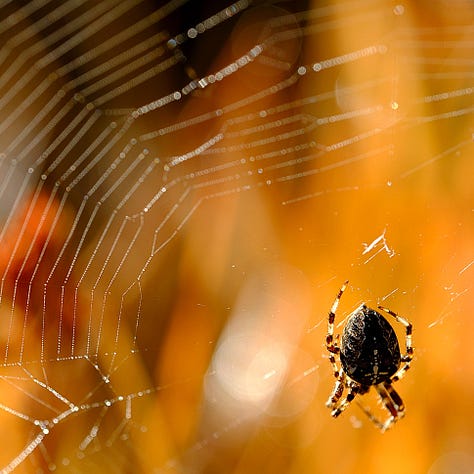
For those who aren't fond of spiders, consider this. These delicate structures, spun from instinct and necessity, can be appreciated from a distance. You don't need to love the creator to admire the art; sometimes, it's enough to marvel at the wonder of nature and the role these weavers play in the tapestry of life on our planet.
In quiet moments, we can glimpse both the beauty and intricacy of the world around us. By pausing to appreciate the spider’s craft we are reminded of the many unseen lives that exist alongside us, and encouraged to tread a little more lightly in our relationship with the natural world. Lesson over ;-)
On Landscape Podcast—A discussion with Tim Parkin and Joe Cornish
The Any Questions? Q&A podcast recorded is now online at On Landscape. We talk about writing and photography, Substack, daily walking and working locally.
How you can help
Last week I asked a question about how you like to enjoy these posts—listening or reading—but omitted to mention this in the audio voiceover! I’ve extended the poll as I would love to know if you have a preference. Your feedback will help me judge how to evolve the content that I share with you. This link will take you to the poll.
Until next week,
Encore:
It’s not been a good summer for butterflies. Here the smaller species of wood and heath seem to have withstood the rain and wind better: Ringlet, Scotch Argus, and Speckled Wood. The last gasp of warm weather saw a flush of butterflies in the garden; at one point I counted 32 on the aptly named butterfly bush (Buddleia davidii). I have never seen so many Peacock butterflies. Red admirals were there too, and I was please to see a Comma butterfly for the first time in the garden.
If you enjoy seeing through my eyes and these letters resonate, there’s an option to leave a few coins in the jar as a one-off donation. To those of you who have done so: thank you.
All words and images copyright © Michela Griffith except where otherwise noted
The best summary of the myth of Arachne that I came across is: Antonis Chaliakopoulos’ Arachne: What Is the Real Meaning of the Myth? The article is also interesting for the artwork inspired by the legend.
Robert the Bruce and the Spider.
And an amusing telling of it by the spider: The Spider’s Legend of Robert the Bruce by Hugh McMillan.
Trying to identify the spiders online actually creeped me out more—it’s probably a numbers thing.








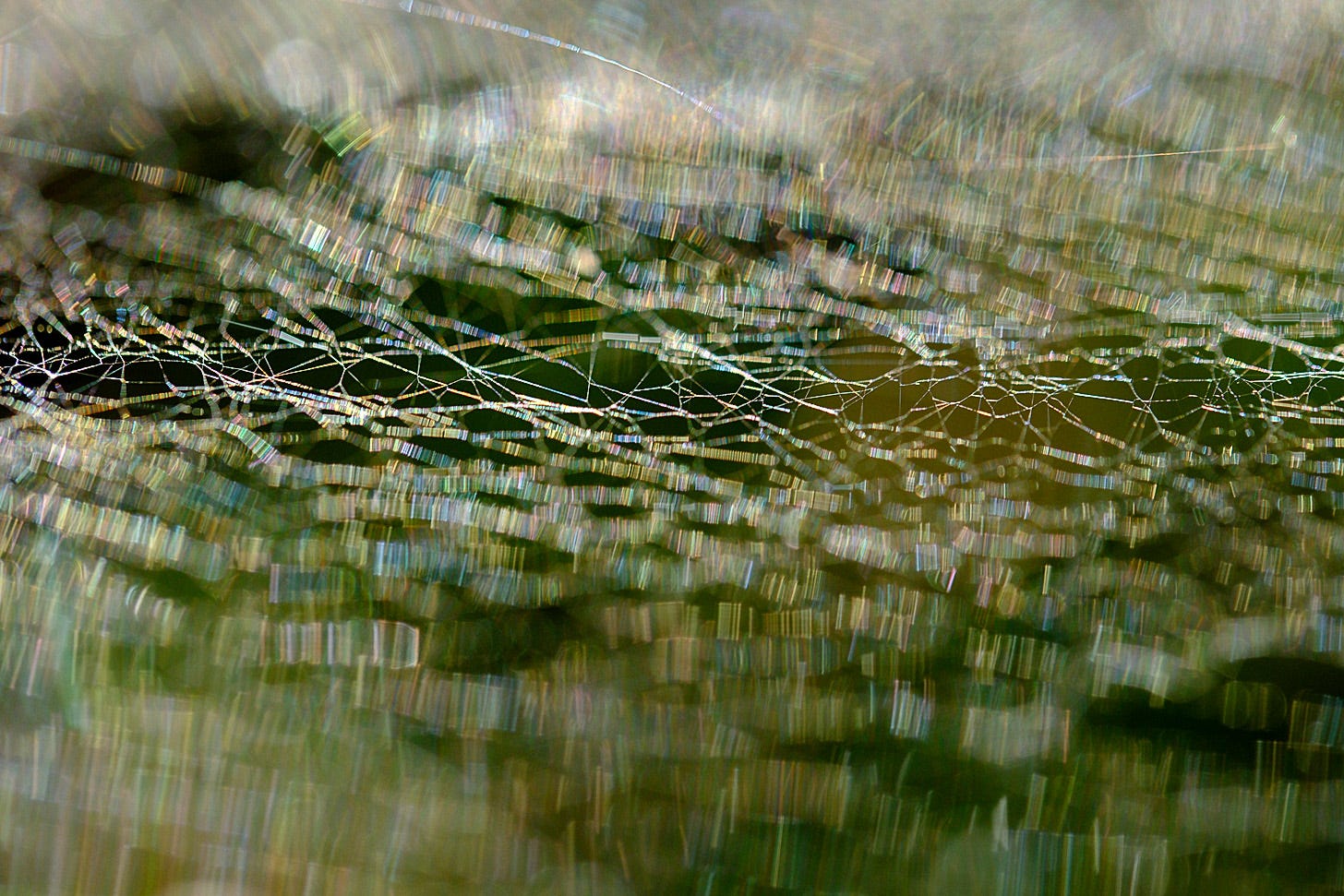
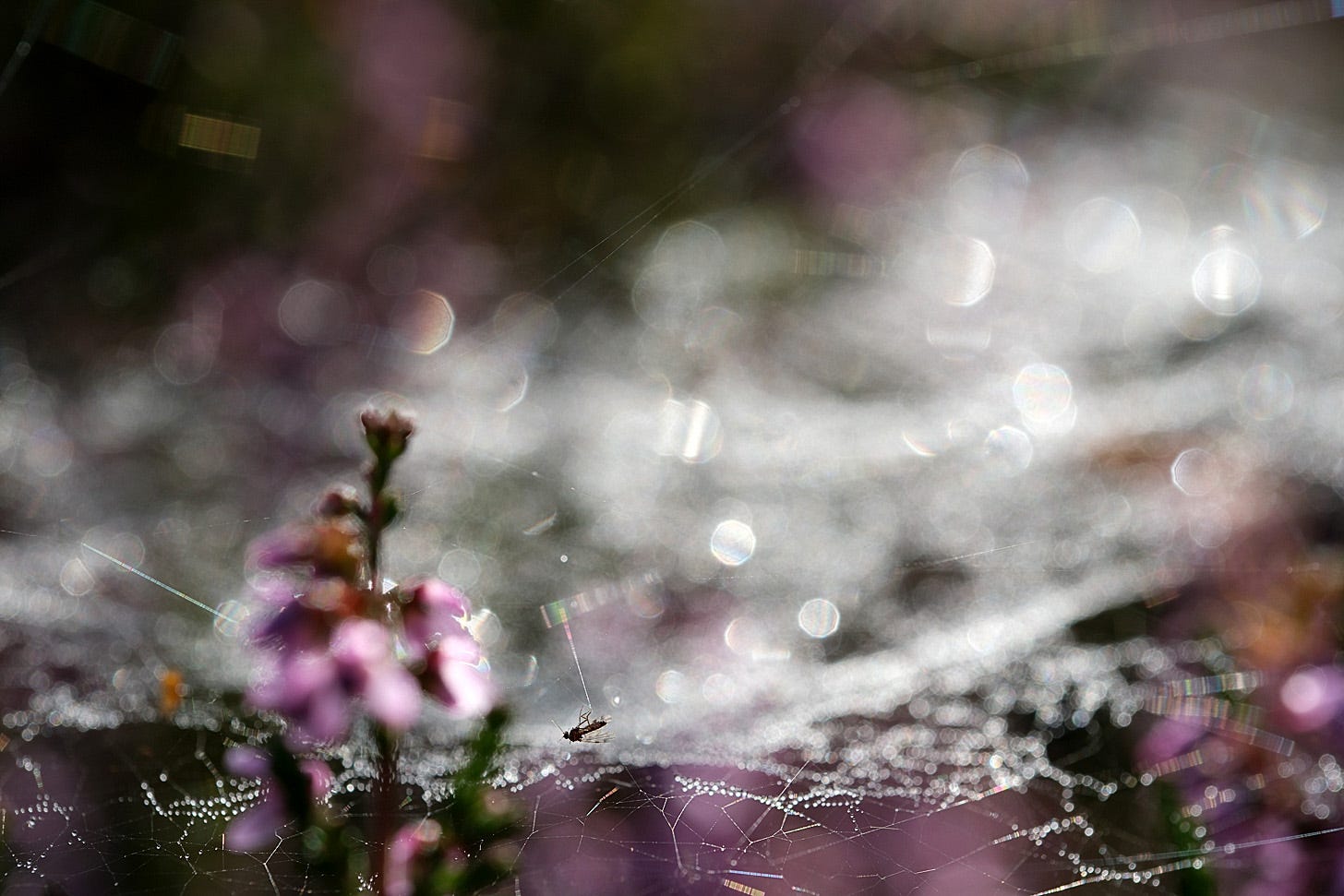

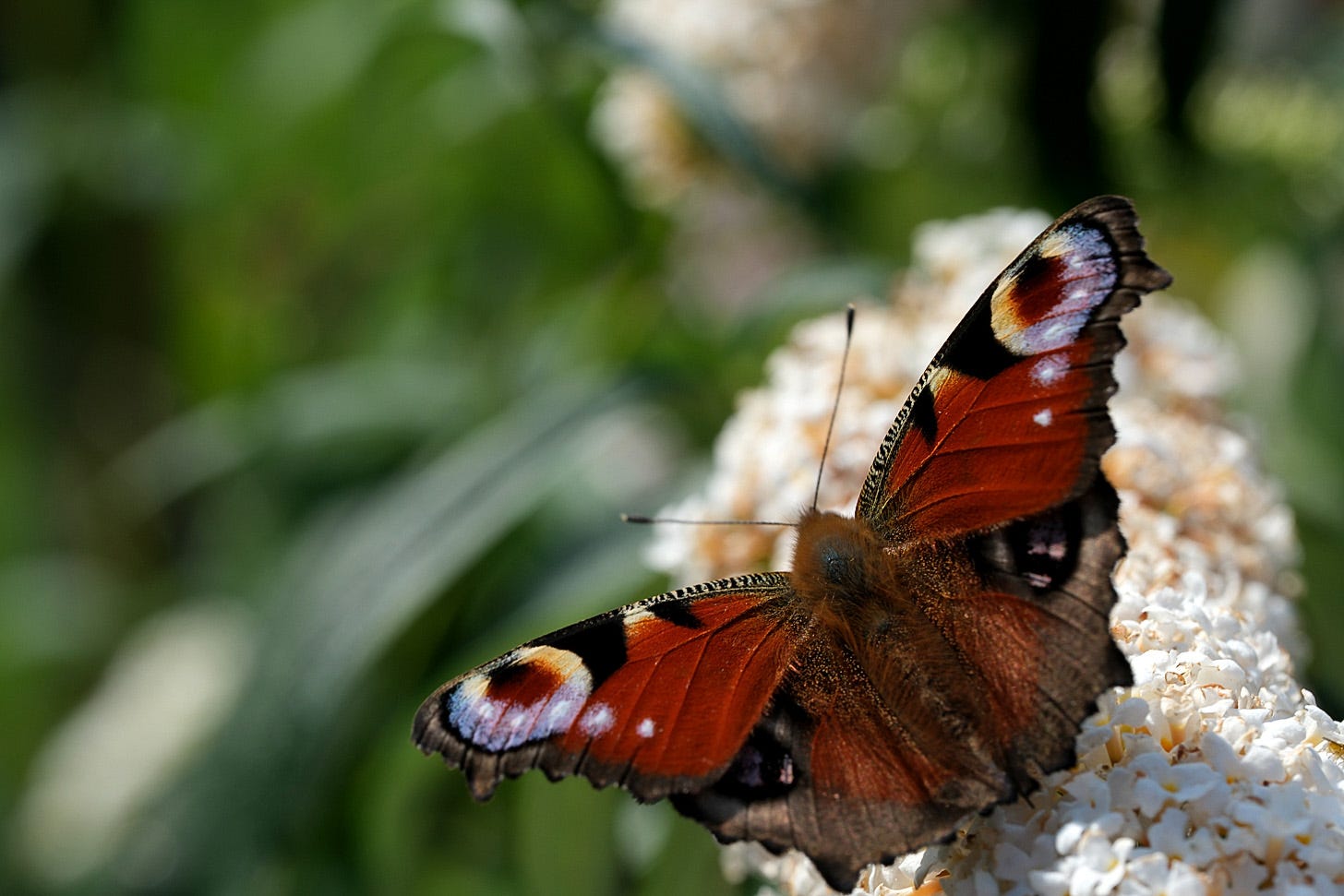

I seem to have stumbled along a river's edge and peered beneath a cobble or two to unearth your exquisite words. Thank you. We share an appreciation for the delicate beauty found in the quietest places. To water and wilds.
Beautiful